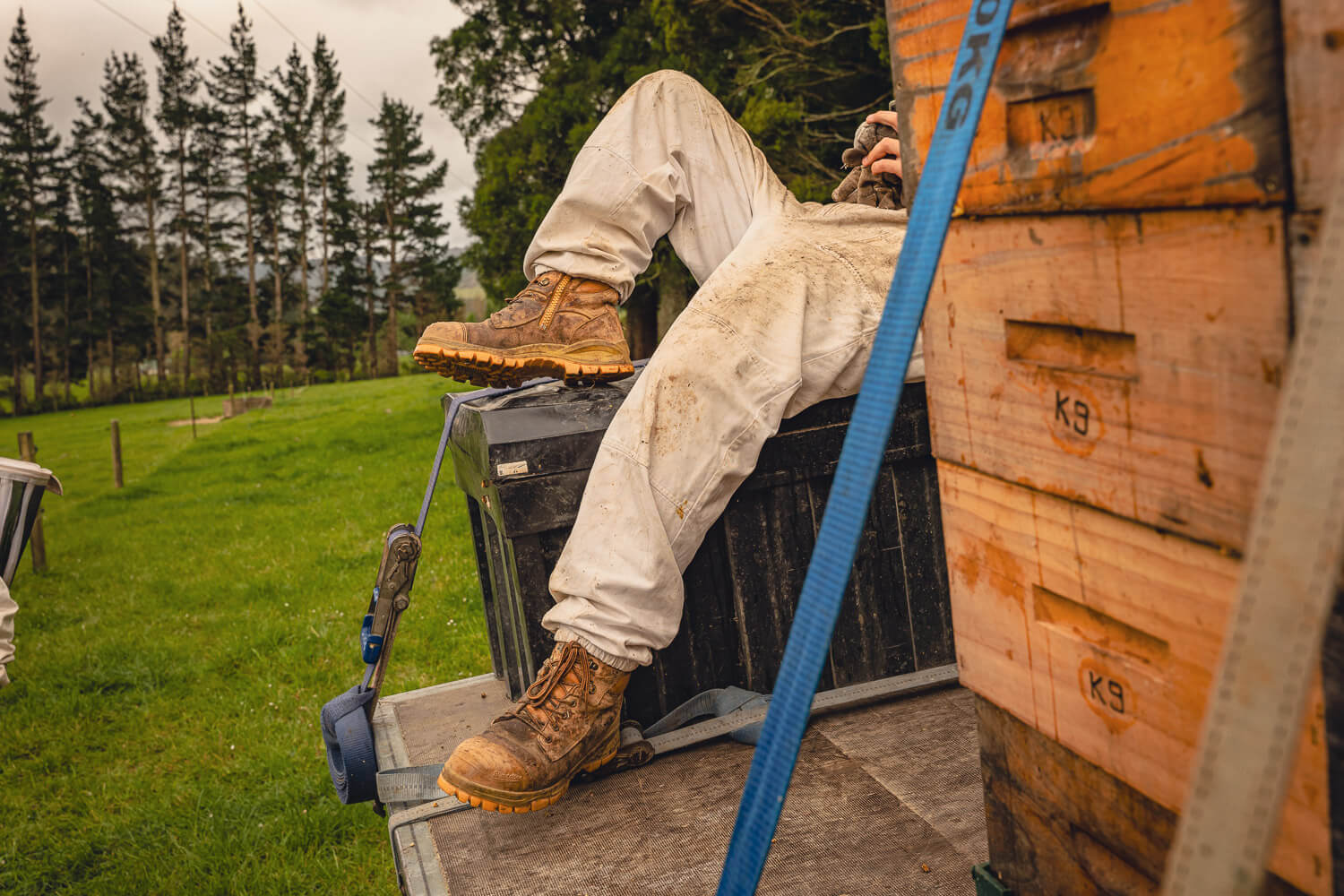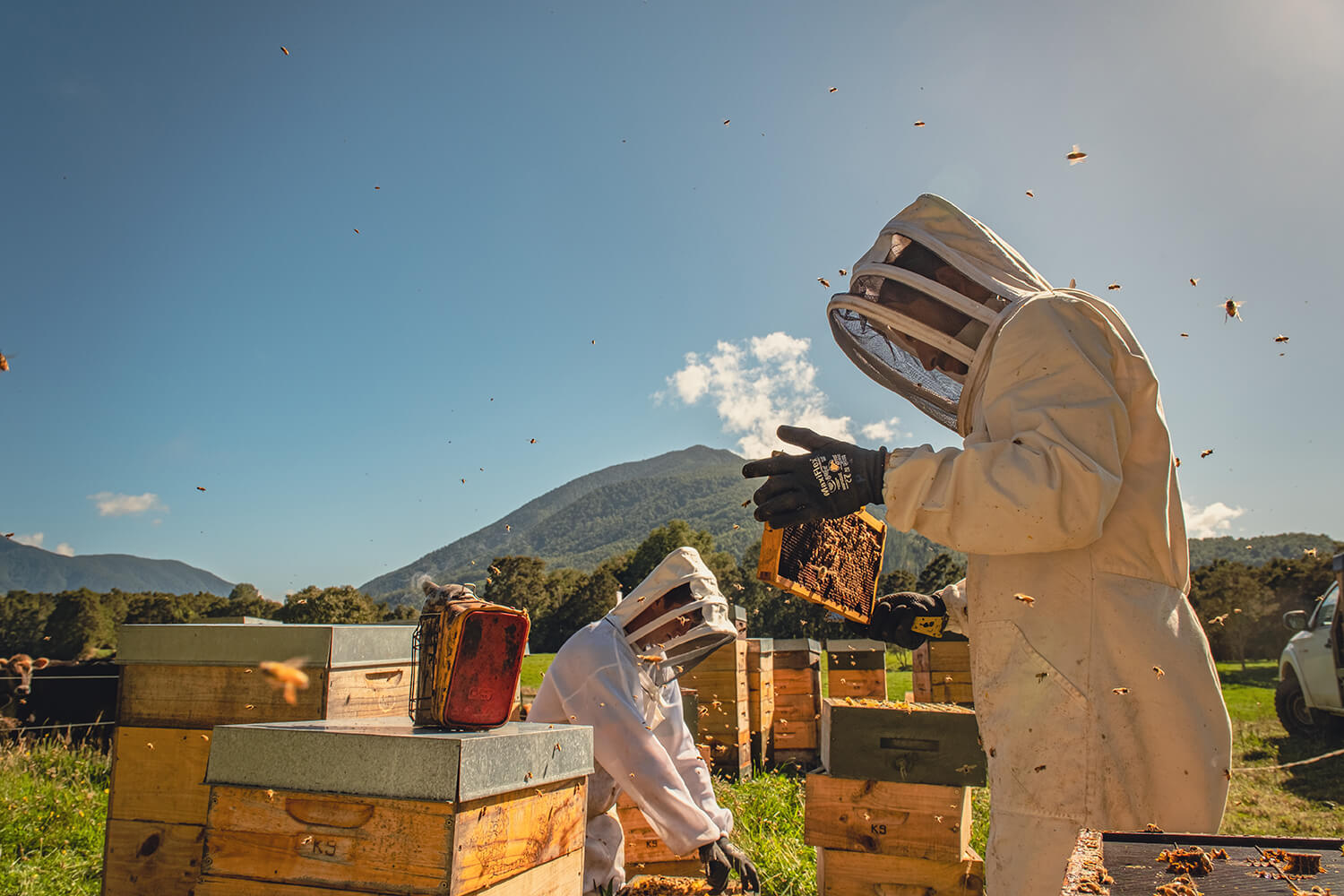A Moment of Pure Gold: The First Honey of a New Season
This is a favourite time of the year for beekeepers, because we get to open the first honey boxes of the season. Every year we find ourselves getting excited, like little kids waiting for Christmas Day. The honey boxes even look like presents, just waiting to be unwrapped.
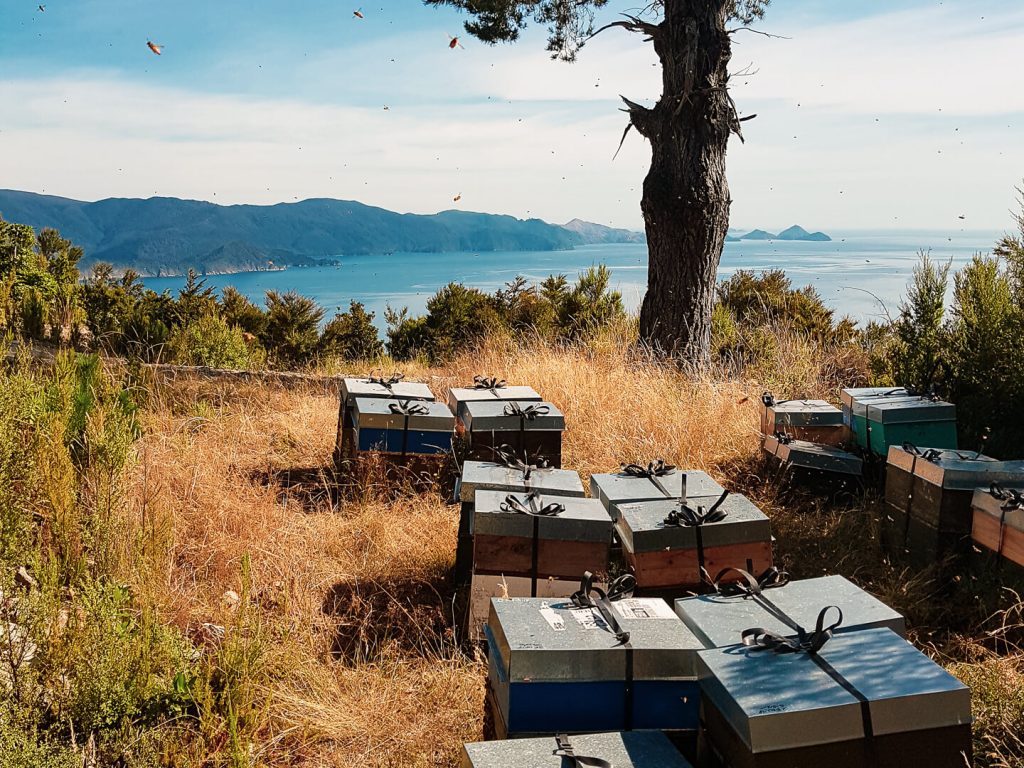
The first of the honey boxes have already made their way to the extraction shed, and the whole place is perfumed with the rich scent of Kāmahi — the first honey of our season. The aroma makes Nicky particularly happy. She says she loves the way kāmahi looks when it pours: “Kāmahi has a special golden colour and just seems to glow as it pours into the jars.” Everyone on our team has their favourite honey, and Nicky’s is definitely Kāmahi.
With the harvest underway, the boys in the shed are getting into the flow of extraction. This year they have a new piece of equipment to play with — a special extractor which processes the beeswax more efficiently. Like a big corkscrew, this piece of equipment squeezes the wax cappings to remove any residue of honey. The much drier wax can then go straight into the melting vat. Some of our beeswax goes into making beeswax wraps but we also sell small beeswax blocks for use around the home. We love hearing from our customers about the different uses they have for beeswax.
While the boys are busy in the shed, our bees are busy finishing their work among the Kāmahi flowers. These fluffy white flowers are now at the end of their flowering season, which is just as well because our bees are already distracted by the alluring scent of Mānuka.
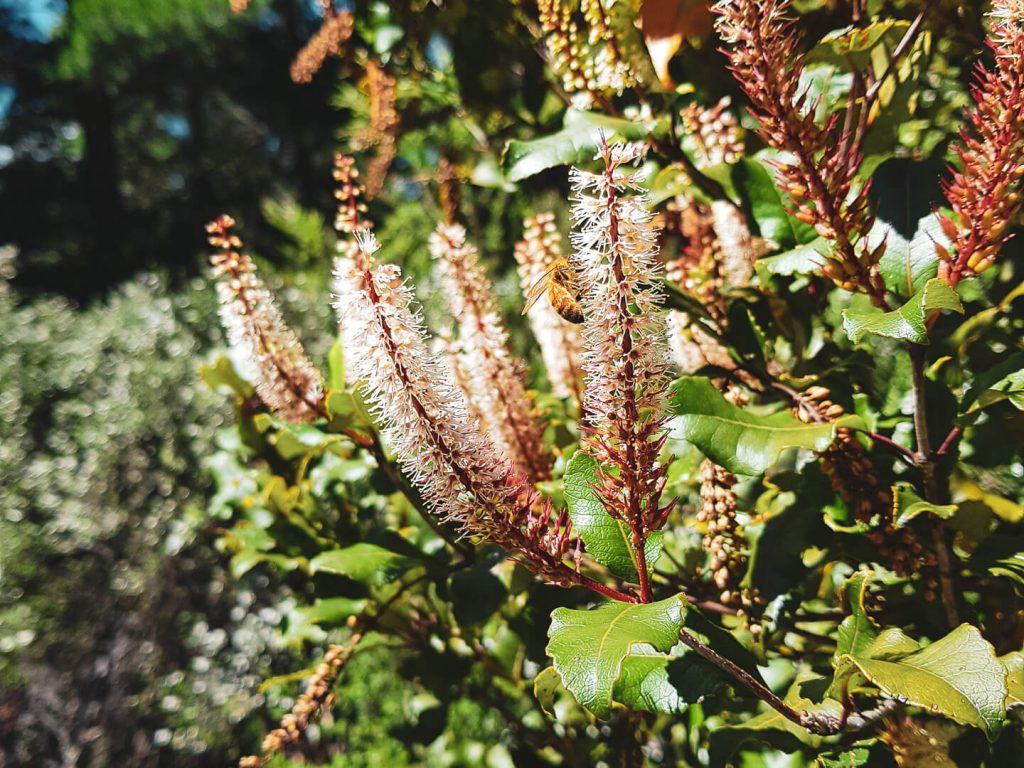
This honey season is proving somewhat challenging. Very unsettled weather and cooler temperatures, not to mention unseasonal hail, frost and snow, have made foraging much more challenging for our bees. Bees are sensible creatures — they don’t fly in the rain and cold, preferring to stay tucked up in their hives. But they’ve faced a further problem this year. If it’s not warm enough, the flowers don’t release all of their nectar. Some flowers, like Mānuka, won’t release their nectar unless the temperature gets to 20 degrees or above. When you think about it, it’s quite clever on the part of the flowers, but bad luck for a foraging bee.
As each flowering season comes to an end, our beekeepers sometimes have to make the decision to move the hives to more favourable locations. Thankfully, we have a great network of landowners and lots of options when it comes to finding the best spots to keep our bees well-fed.

Each time we visit the hives, we do a range of checks to ensure that our bees are healthy and happy. We are always especially on the lookout for American Foulbrood disease. All of our beekeepers do a special course so they can detect any signs of this devastating disease. As we lift the frames we inspect the honeycomb very closely, looking for any subtle changes in the architecture which would indicate that something is wrong.
We can usually tell that a hive is happy even before lifting any frames. It’s almost as if the hive is humming ‘in tune.’ Experienced beekeepers become highly attuned to the sound of the bees, it’s almost like an intuition.
Another important job at this time of the year is to check that the entrances to the hives are clear. We never use sprays, prefering to clear the weeds by hand to avoid introducing harmful chemicals into our delicate ecosystems.
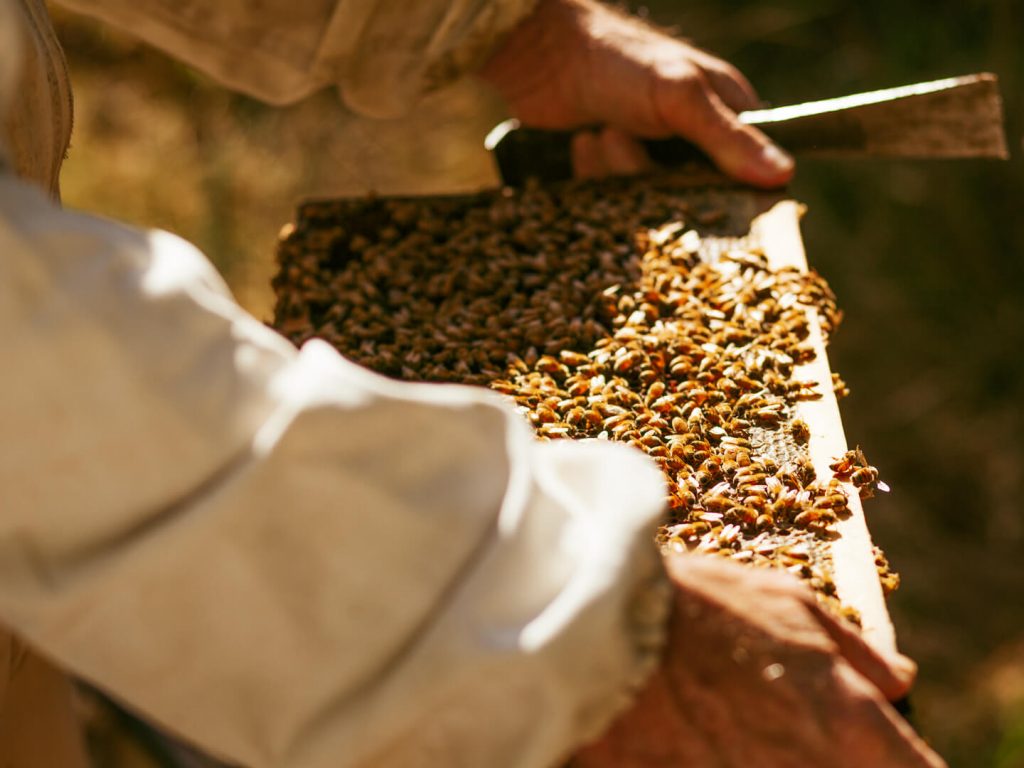
Although this season is shaping up to be one of the most challenging we have known, we still think we have one of the best jobs in the world. We feel so privileged to work with our bees in such beautiful locations.
Nothing beats opening the first honey boxes after a long trek into the wilderness. And the best moment of all is carving off the caps of white wax to reveal the golden honey. It’s such a simple pleasure, but it’s those little things that count.
